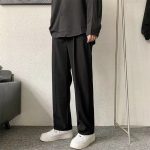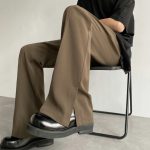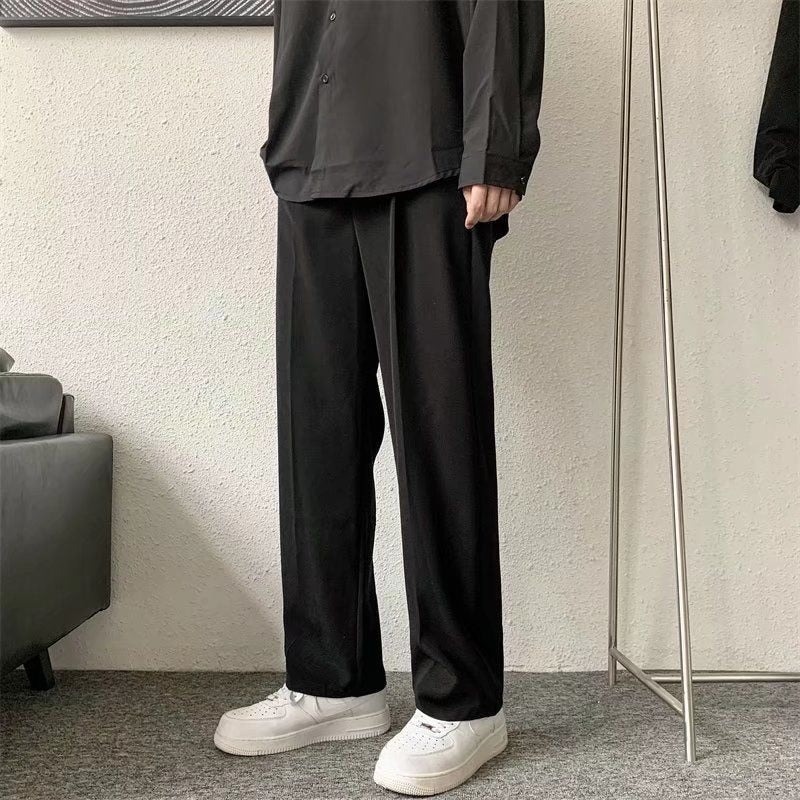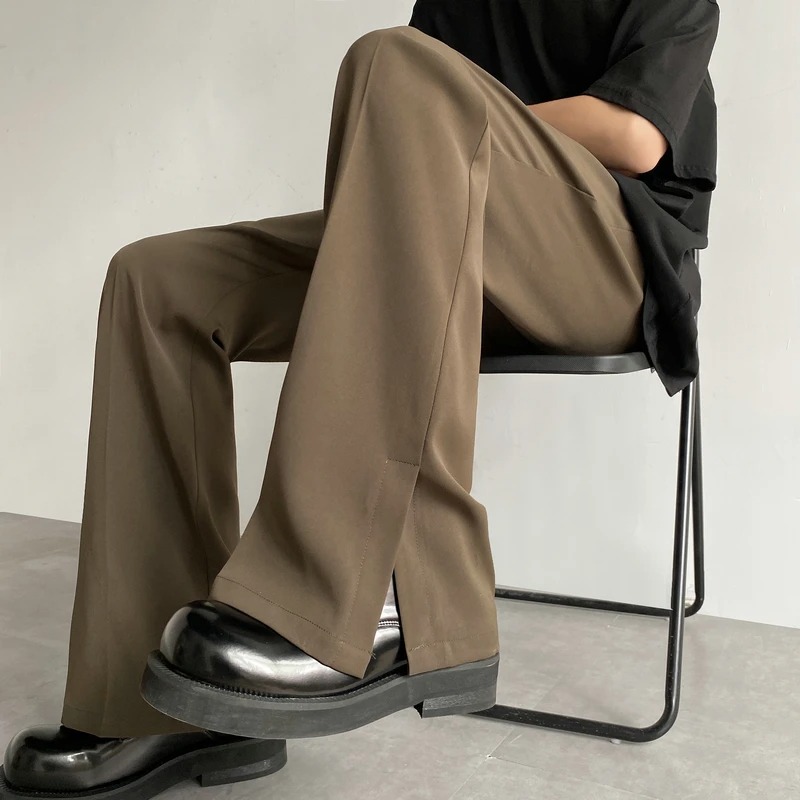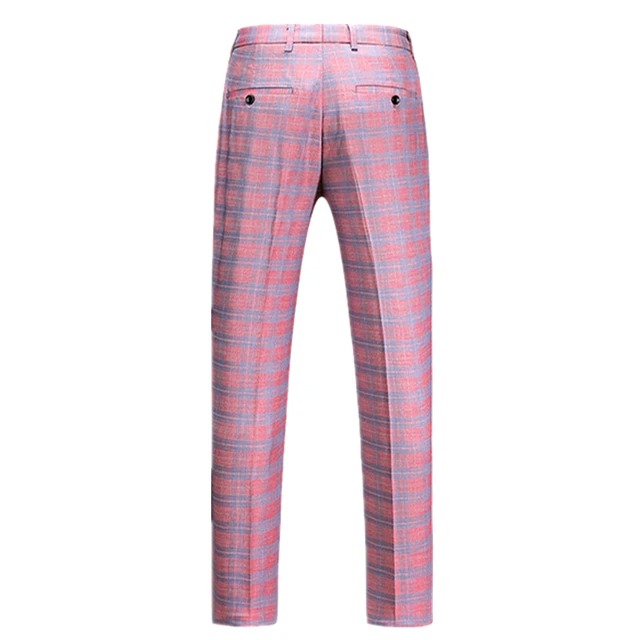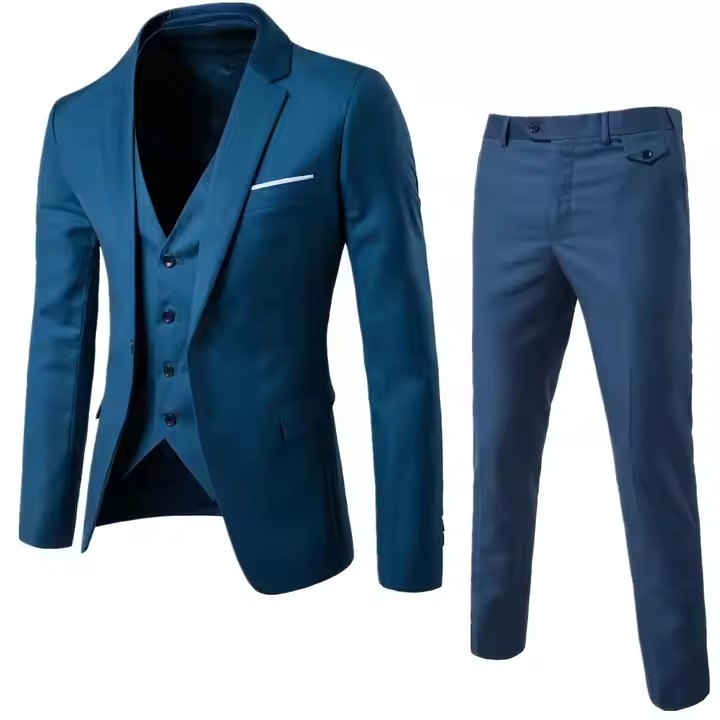Introduction to Suit Pants Fitting
How should suit pants fit? When we talk about suiting, the fit of the pants is crucial. Many overlook this part of the outfit. Yet, it can make or break the overall appearance. A pair of well-fitted suit pants should be comfortable. They should also enhance your frame and complement the suit jacket. In this guide, we will delve into how suit pants should fit. We’ll explore the elements that contribute to a perfect fit. This knowledge is key whether you’re buying off-the-rack or going for a tailored suit.
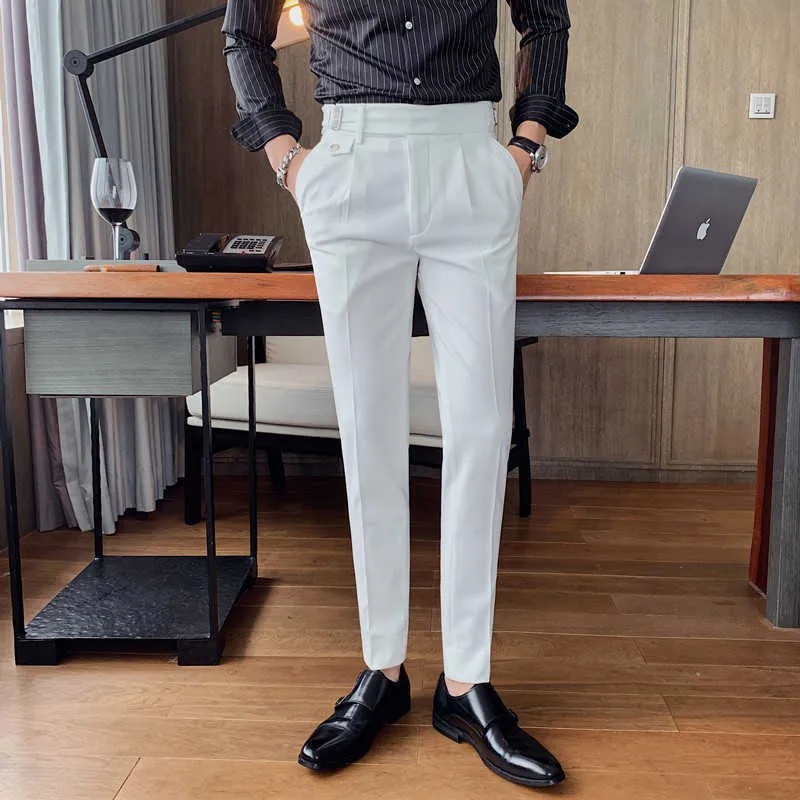
The Importance of Properly Fitting Suit Pants
A proper fit is essential in suit pants. It not only defines your silhouette but also impacts comfort. A pair of pants that fits well will stand the test of time. It will remain stylish and maintain its shape as fashion trends come and go.
Good-fitting suit pants do more than just look good. They can hold their form throughout the day. Even after hours of sitting, standing, or moving, they look sharp. This is crucial for professionals who need to keep a clean and polished look.
When your pants fit correctly, they allow for freedom of movement. This means you can stay at ease in various activities. Whether attending meetings or going out to dinner after work, you will not feel restricted.
Key Measurements for the Perfect Pants Fit
Finding the right fit for suit pants is an art. To master it, focus on key measurements. Here’s what you need ‘to nail’ for that tailor-made look:
- Waist: Your pants should sit at your natural waistline. They shouldn’t need a belt to stay up. But they shouldn’t cut into your stomach either.
- Rise: The ‘rise’ is the distance from the crotch seam to the top of the waistband. It affects how your pants hang on your body. For a classic fit, go with a rise that allows you to sit comfortably.
- Length: The pants should ‘brush’ the top of your shoes. The back of the pants should reach slightly further. This creates a small break. No fabric should bunch over your shoes.
- Seat: The fabric around your buttocks should fit smoothly. Look for a clean drape with no pulling or sagging.
- Thighs: Your pants should hug your thighs lightly. They should not be too tight or too loose. You want enough room to move without excess fabric.
These points are crucial for achieving the perfect pants fit. Make sure your suit pants follow these guidelines. You’ll look sharp and feel comfortable at the same time. When in doubt, consult with a tailor. They can make precise adjustments for an even better fit.
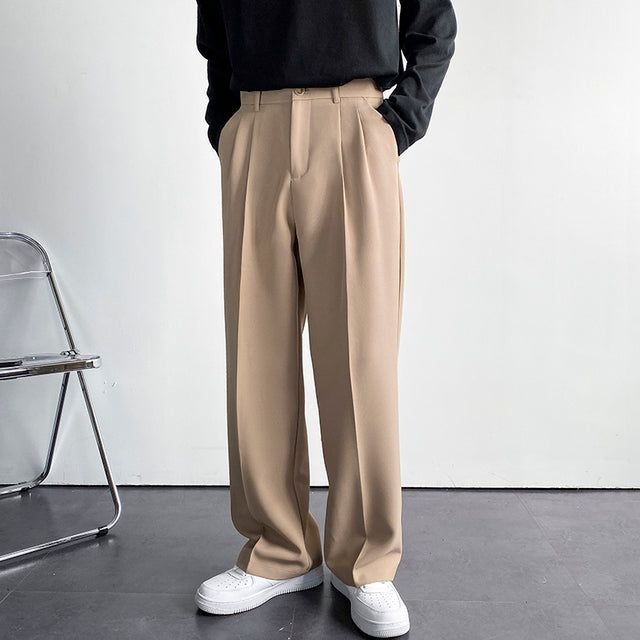
Common Fit Problems and Solutions
Finding the perfect fit for your suit pants can be challenging. You might face common issues that keep your pants from fitting just right. Let’s look at these problems and how to solve them.
- Waist Gapping: If your pants gap at the waist, they’re too big. Try a smaller size or have a tailor adjust the waistband.
- Sagging Seat: A sagging seat means the pants are too large in the buttocks area. This can be fixed by taking in the seat with the help of a tailor.
- Tight Thighs: When pants are too tight around the thighs, they restrict movement. You may need a larger size. Or, a tailor can let out the fabric, if possible.
- Long Length: If your pants are too long, they’ll bunch over your shoes. Have them hemmed to create a clean break at the top of the shoe.
- Short Length: Pants that are too short will sit above the shoe. This is known as ‘high-water’ style and is usually not desired. Look for a longer inseam or let down the hem.
Solving these issues will help your pants fit better and look more tailored. Remember, small adjustments can make a big difference. When in doubt, seek advice from a professional tailor.
How to Check Your Suit Pants Fit
Knowing how to check your suit pants fit is crucial. A good fit ensures comfort and style. Here are steps to assess the fit of your suit pants:
- Waist Check: Stand straight and see if the waistband rests snugly around your natural waist. It should not need a belt to stay in place but should also not be too tight.
- Rise Test: Sit down to make sure the rise is comfortable. Your pants should not pull down or reveal your underwear.
- Length Look: View your profile in a mirror. Check that the pants ‘brush’ the top of your shoes and create a subtle break.
- Seat Situation: Observe the seat area to ensure it fits smoothly. There should be no sagging or pulling fabric.
- Thigh Feel: Walk around a bit. Make sure your thighs have enough room. Your pants should not be restricting.
Perform these checks with both standing and sitting positions. Confirm that your movement is not limited by tightness in any area. Get a friend to help or consult a mirror from different angles for a better view.
Tailoring Tips for a Custom Fit
After assessing your suit pants fit and identifying any issues, tailoring is the next step. Here are tips to ensure a custom, tailor-made fit:
- Measurement Precision: Ensure your tailor takes precise measurements. Accurate figures lead to a better fit.
- Communication is Key: Clearly explain to your tailor how you want your pants to fit. Use examples or pictures to illustrate your preference.
- Choose Experience: Opt for an experienced tailor. They can offer valuable guidance on fit and style.
- Quality Check: After alterations, try on your pants to check the fit. Ensure no area is too tight or loose.
- Multiple Fittings: Have multiple fittings if necessary. Adjustments might need fine-tuning for a perfect fit.
Following these tips, you will get pants that not only fit well but also feel comfortable. Additionally, they will enhance your form and pair seamlessly with your suit jacket. Remember, well-tailored pants are an investment in your appearance and confidence.
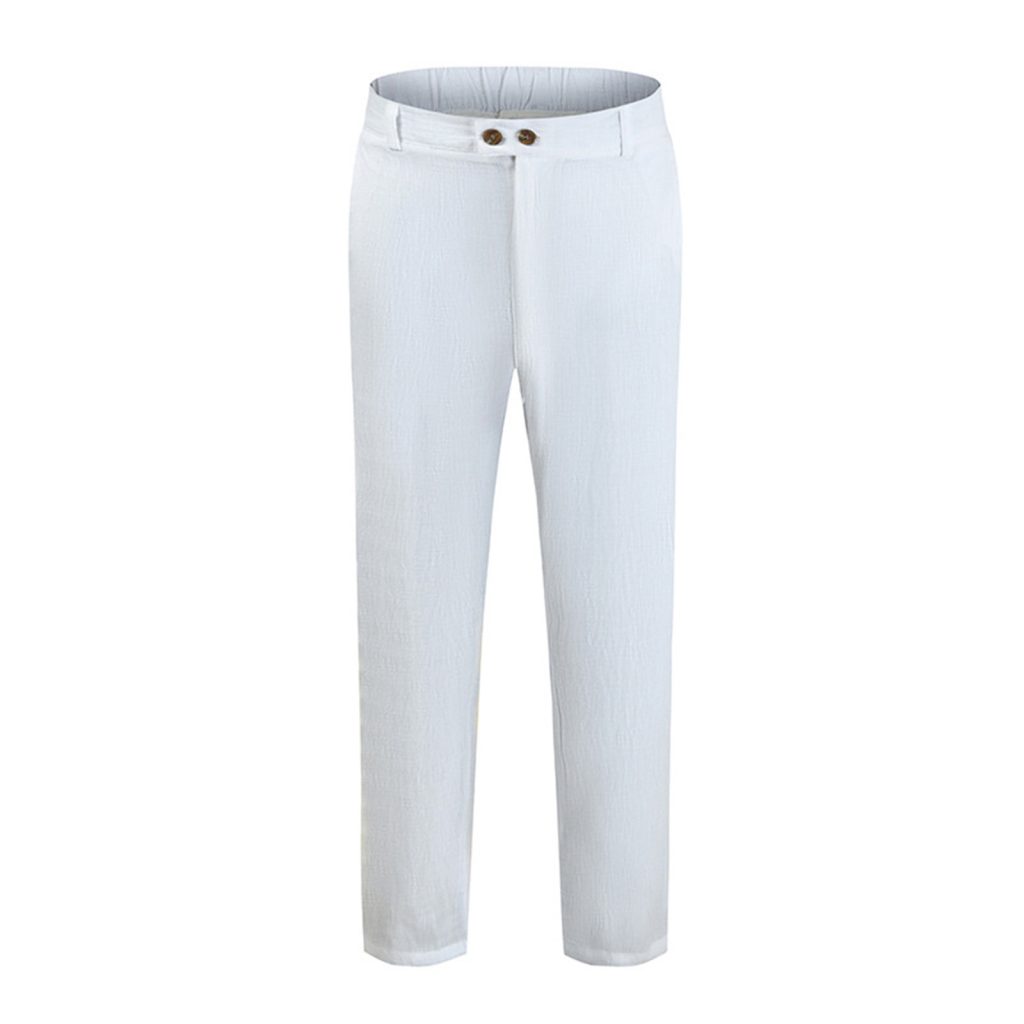
The Role of Fabric and Style in Pants Fit
Choosing the right fabric and style is essential for a good fit. Different materials behave uniquely on the body. For instance, wool is forgiving and drapes well, while cotton might wrinkle and lose shape. When selecting suit pants, consider how the fabric will complement the fit. A heavy fabric can add bulk, while a lightweight one might not hang correctly.
The style of the pants also plays a critical role in fit. Slim-fit pants will have less room in the thigh and leg opening. Meanwhile, a classic fit offers more space. Consider your body type when choosing a style. If you are athletic, a slim fit might be too tight. In that case, a regular or relaxed fit could work better.
It’s important to look at the overall design as well. Features like pleats can affect the waist and appearance. Flat-front pants provide a more modern, streamlined look. Pleated pants, on the other hand, offer more room and comfort. Choose based on what flatters your body and personal style.
Maintaining the Fit of Your Suit Pants
Keeping your suit pants in perfect condition takes careful attention. Here are tips to ensure they keep their fit.
- Store Properly: Hang your pants on sturdy hangers. This keeps the fabric straight and prevents wrinkles.
- Regular Cleaning: Dry clean your pants according to wear frequency. Avoid too much heat. It can alter the fit by shrinking or stretching the fabric.
- Mindful Wearing: Be conscious of stress areas. Don’t carry bulky items in your pockets that can stretch the seams.
- Prompt Repairs: Fix loose buttons and hems quickly. Delaying can cause further damage and affect fit.
- Seasonal Rotation: Rotate your pants to reduce wear. Wearing the same pair constantly can cause them to lose shape faster.
By following these steps, your suit pants will maintain their pristine condition. They’ll offer a great fit every time you put them on. Remember, consistent care goes a long way in keeping your attire looking sharp.

